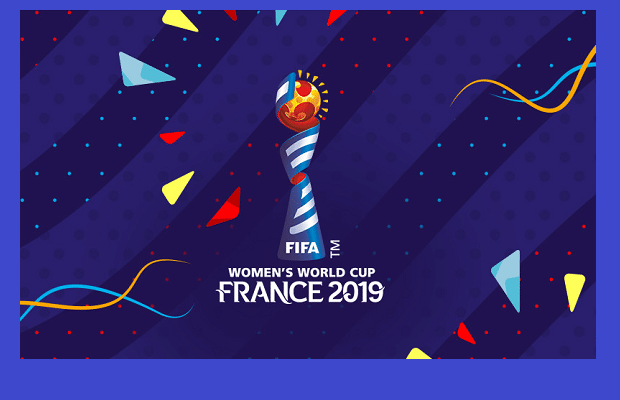
The international survey of 114,973 internet users by GlobalWebIndex reveals the audience gender disparity is not as varied as people think between women’s and men’s event. Compared to the men’s world cup, the difference is surprisingly low should it be on this year, where it would draw in 39% female audience.
Other interesting findings include:
- 83% of the Women’s World Cup audience believe there needs to be greater strides for equality. Which is a 12 percentage points higher compared to the average global internet user (74%).
- 56% of the tournament’s audience have an interest in social issues
- 54% of the tournament’s audience is aged 16-34, and are consider affluent
- Women’s World Cup audience averages around 2 ¾ hours a day on social media
- 84% of the audience are using their mobile phones (69% on social media) whilst watching TV (second-screening)
- Facebook and YouTube most used platforms across the globe for Women’s World Cup Audience (platform popularity for the Women’s World Cup, rankings by regions in release below)
By gender, the audiences of the Men’s and Women’s World Cups are not significantly different, with 39% of the Men’s World Cup audience being female, compared to 47% for this year’s Women’s World Cup. Interestingly, insights from the study highlight the audience for the Women’s World Cup is notably younger – just over half (54%) of its audience aged 16-34.
The Women’s World Cup, can also be considered relatively affluent as well, with just 21% falling into the lowest income segment globally.
Katie Gilsenan, Senior Trends Analyst at GlobalWebIndex comments – “It makes sense that the growing online audience for the men’s game has resulted in a younger, more diverse audience increasingly curious about the women’s competition. Growing attention from the media and notable figures, such as David Beckham and Prince William are playing a big part here. As is getting the games broadcasted by the BBC during the prime viewing slots, in addition to powerful and evocative message campaigns, such as BBC’s ‘Change the Game’. The importance of cross-gender marketing campaigns shouldn’t be underestimated, and neither should their ability to drive viewing numbers, awareness and participation.”
Social good and the Women’s World Cup
Globally, just one in three internet users currently describe themselves as having an interest in social issues. By contrast, the Women’s World Cup brings together an audience among which 56% express interest.
Notably, when looking at their personal outlooks on the world, the Women’s World Cup audience is 12% more likely to place equality of high importance to them than the average internet user. Globally, 83% of this audience believe there should be greater strides made in achieving equality – compared to 74% of the global online population.
Reassuringly, this doesn’t change drastically when it comes to the men’s event. Globally 78% of this audience state we should strive for equality. When looking at the global regions, the Women’s World Cup audience emerge as more passionate about equality.
| % of those who watch each competition aged 16-64 who strive for greater equality | |||||
| Asia Pacific | Europe | Latin America | Middle East and Africa | North America | |
| FIFA Women’s World Cup | 82% | 78% | 91% | 88% | 82% |
| FIFA Men’s World Cup | 79% | 71% | 86% | 76% | 79% |
Where to find the audience
To reach these audiences, marketers need to lean into the power of social media. Whilst watching TV, 84% of this audience are second-screening on their mobile phones, with usage of social media (69%) claiming top spot as the most popular form of second-screening activity.
In fact, the Women’s World Cup audience averages around 2 ¾ hours a day on social media, with YouTube and Facebook named as the platforms FIFA Women’s World Cup viewers are using on a daily basis, across the majority of regions.
Delving into why this audience is using social media, around half are using it to keep up-to-date with current events or find entertaining content, and 46% are using it to research products to buy.
| Below identifies the top 5 platforms used frequently by the Women’s World Cup audience on a daily basis (more than once a day).
% of Women’s World Cup Watchers who use the following social platforms daily or more |
|||||||||
| Asia Pacific (excluding China) | Europe | Latin America | Middle East & Africa | North America | |||||
| YouTube | 85% | 62% | YouTube | 87% | 82% | 62% | |||
| 75% | 57% | 85% | 80% | YouTube | 52% | ||||
| 60% | YouTube | 56% | 82% | YouTube | 77% | 45% | |||
| 55% | 39% | 61% | Facebook Messenger | 58% | 38% | ||||
| Facebook Messenger | 52% | Facebook Messenger | 38% | Facebook Messenger | 58% | 58% | Facebook Messenger | 33% | |
Katie continues -–“For brands, women’s sports offer access to an affluent and passionate audience, who are real sports fanatics. Followers are brand-engaged on social media, making the second screen more powerful. Unlike men’s leagues, there will be more opportunities for smaller and emerging brands to sponsor women’s sports or athletes without being overshadowed, allowing them to make more meaningful, emotional connections with viewers.”
“For brands wanting the attention of these viewers, maximizing the digital footprint of a campaign will be key. The Women’s Sport Trust and Sky Sports is a great example of a cross-gender and socially driven campaign. Their #ShowUp campaign, generated 92 million impressions across social media in the first week alone, proving the appetite for women’s sports.”
Latest Women’s Sports and Fans report, here
